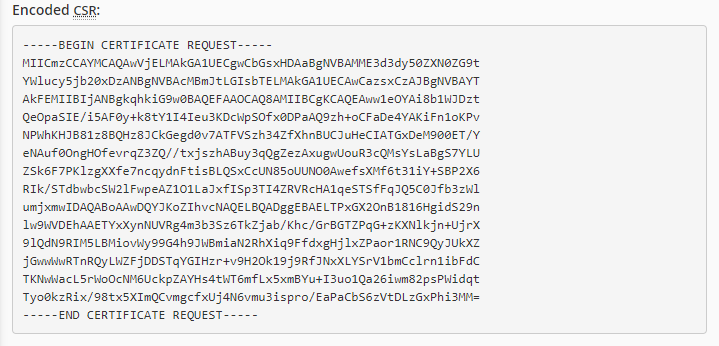Rate this article: 



 (8 votes, average: 4.25)
(8 votes, average: 4.25)




 (8 votes, average: 4.25)
(8 votes, average: 4.25)Node.js is a free open-source server environment that runs Javascript on the server. It works on various operating systems such as Windows, Linux, Unix, OS X, etc. and is commonly used for developing server-side web applications.
Certificate Signing Request (CSR) is an encoded message that contains details such as the public key of the domain/s for which the SSL certificate is applied for, contact details and/or digital signature. A CSR is sent from an applicant to a certificate authority as a part of the application process for obtaining a digital certificate.
The process of generating CSR on Node.js is very straightforward.
OpenSSL utility, which is generally included in modpack, is used for CSR generation on Node.js. It doesn’t require additional steps to install OpenSSL. You can find OpenSSL in your modpack using this command: $ openssl.
In case OpenSSL is not included in the modpack by default, it can be downloaded with one of the following commands:
The following commands are used to generate a new CSR and RSA private key:
openssl req -new -newkey rsa:2048 -nodes -keyout domain.key -out domain.csr
The CSR will be generated and stored in the domain.csr file and the private key will be generated and stored in the domain.key file. When running the command, you should change the names of these files and replace them with the domain name for which you are generating CSR. (Sometimes when different SSL certificates are installed for different domains, things become confusing. This is an optional step.)
After having run the command, you will see prompts for these fields, which should be filled with alphanumeric characters only.
All SSL certificates cover both www and non-www version of the domain name (even a single domain SSL).
For Wildcard certificates, your domain name should be written with an asterisk. (*.mysite.com).
Write “NA” if
Write “NA” if
The CSR code will be created in the domain.csr file. You can copy-paste it into a text editor.

If it’s hard to find domain.csr file, you can find it with this command: sudo find / -iname “.csr.”
Once you have the CSR, it should be used for the SSL certificate installation.
—–BEGIN CERTIFICATE REQUEST—– and —–END CERTIFICATE REQUEST—– are considered the header and footer of the CSR code. Whenever you send CSR to the certificate authority, include the header and footer into the code.
The private key generated will be created in the .key file. It contains the following header and footer:
—–BEGIN RSA PRIVATE KEY—– and —–END RSA PRIVATE KEY—–.
The private key must be kept safe. Save it in a separate file on your computer. It will be necessary in the SSL certificate installation process on the server after your certificate authority issues the certificate.
Save a bunch when you buy your wildcard certificate direct. Get a Comodo Wildcard Certificate for less than $80 per year.
Compare Wildcard Certificates